Tom’s Hardware Verdict
With super quick response and no motion blur, the Acer Predator X34 OLED delivers premium gaming for a little less money than its competitors. It isn’t perfect, but a gorgeous and colorful OLED image will pull you into its 800R curve for an addictive experience.
Gorgeous OLED image with deep contrast and rich color
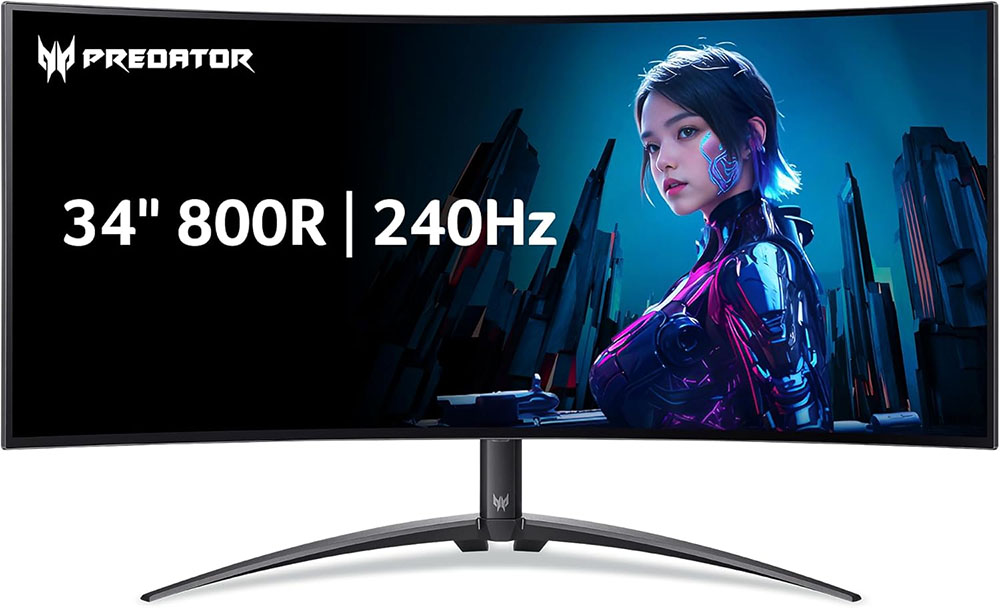
Excellent game performance with low input lag
Tank-like build quality
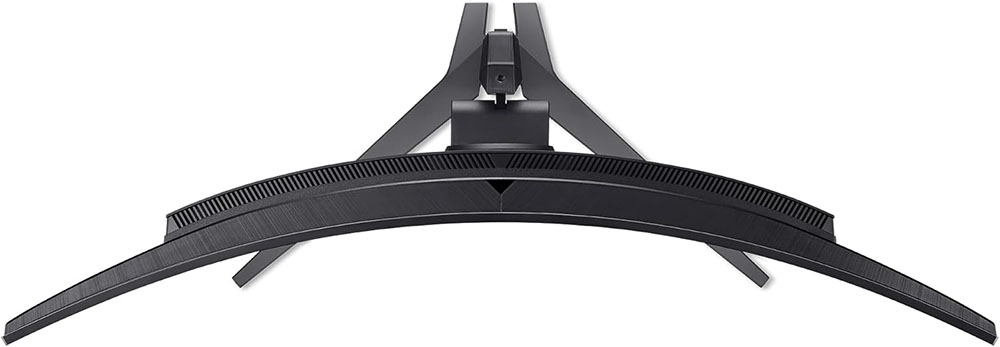
A tad less expensive than the competition
Needs calibration for best picture
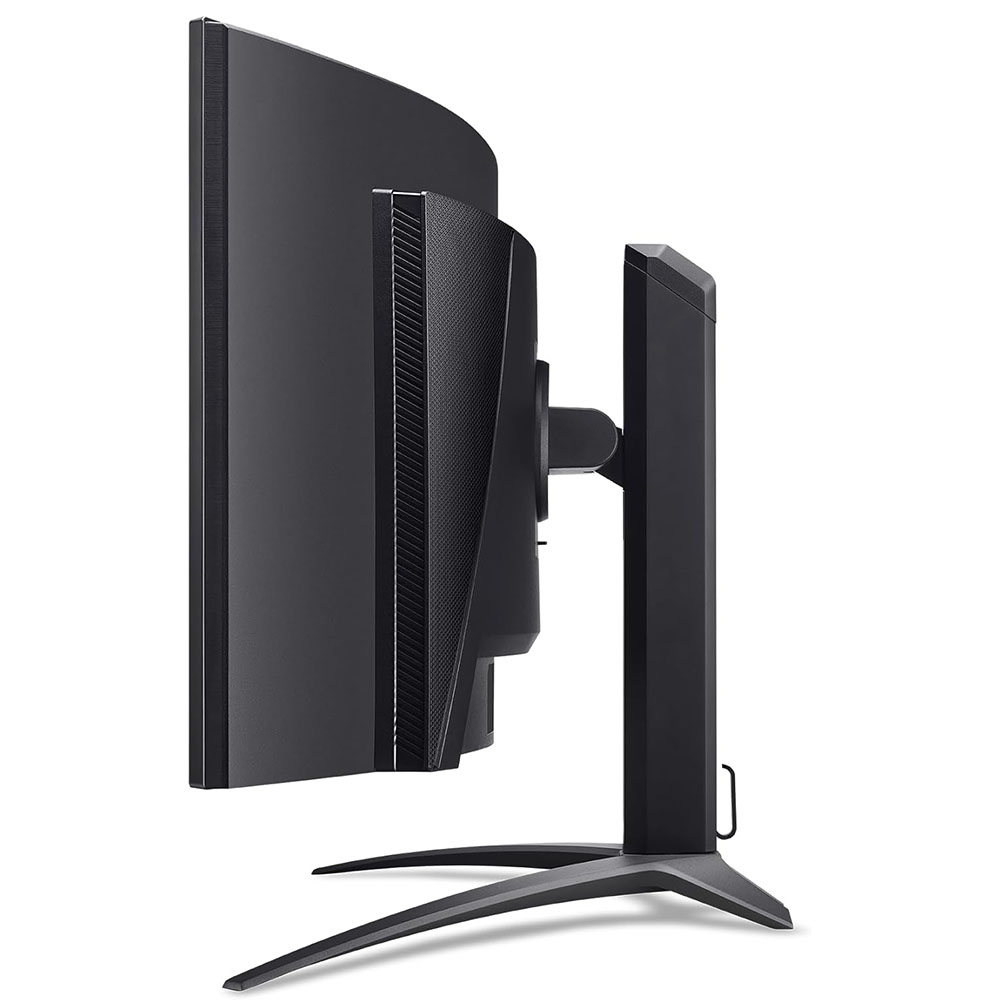
Slight grayscale and EOTF errors for HDR content
No usable sRGB mode
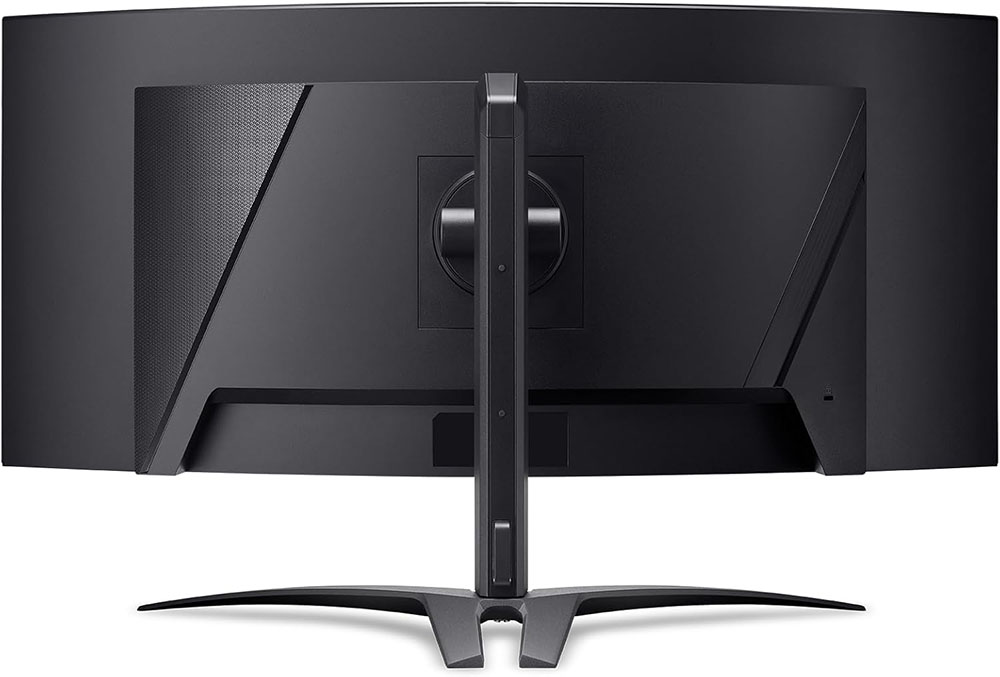
Why you may trust Tom’s HardwareOur expert reviewers spend hours testing and comparing products and services so you can choose the best for you.Find out more about how we test.
Features and Specifications
When I was preparing for this review of the Acer Predator X34 OLED, I thought that I had already reviewed an Acer monitor called X34 in the past. A quick search of my archives revealed anotherPredator X34from 2016 and anX34Pfrom 2018. OK, so this is the X34 OLED. But wait a minute. Acer’s catalog currently includes four X34s, two of which haveOLEDpanels. How to choose?
My subject here is the X34 OLED with the 800R curvature. It’s the most extremely curved monitor in Acer’s lineup and in anyone else’s for that matter. An 800mm radius means the edges of the screen practically wrap around your head. You can actually hear your voice reflected into your ears when you sit close.
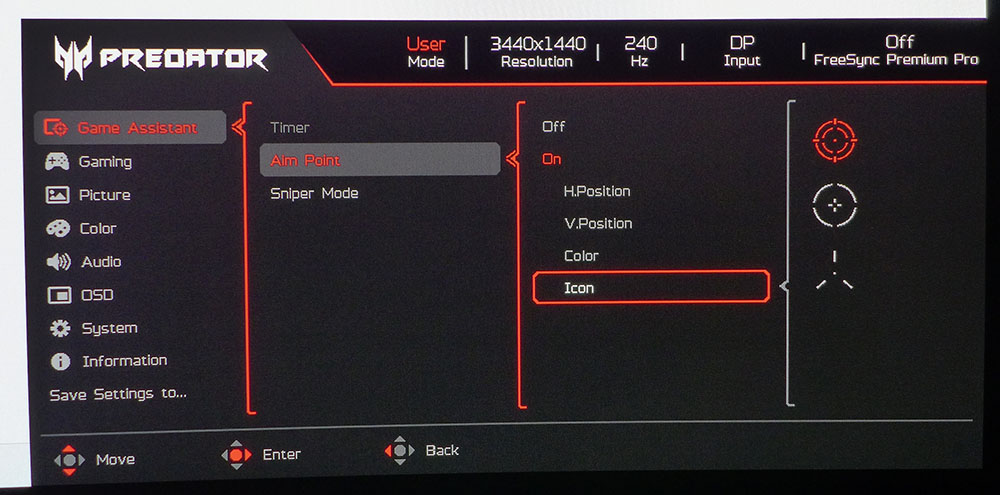
But that’s not all. The X34 OLED features a 34-inch 21:9 screen with WQHD 3440x1440 resolution, a 240 Hz refresh rate, Adaptive-Sync, HDR400, wide gamut color, KVM switching and the latest connectivity. And it sells for around $900 at this writing, which puts it in the sweet spot among thebest gaming monitors.
Acer Predator X34 OLED Specs
While $900 isn’t trivial, the X34 OLED is less expensive than other 34-inch 21:9 OLED gaming monitors. Concerning the naming, the X34 OLED is not to be confused with the X34 QD-OLED. That more expensive display has, you guessed it, Quantum Dot technology for a larger color gamut. It also has a 175 Hz refresh rate and a gentler curve radius. The X34 OLED, on the other hand, is built for high-performance gaming and leaves nothing under the table regarding speed and response.
The refresh rate is 240 Hz, which is achieved without overclocking, and both flavors ofAdaptive-Syncare supported. Two DisplayPort 1.4 inputs and a USB-C port accept 3440x1440 signals with 10-bit color processing. Two HDMI 2.1 ports are there for consoles and other video source components. The X34 OLED has a KVM switch with four USB downstream ports (version 3.2), including two right up front with a headphone jack for easy access.
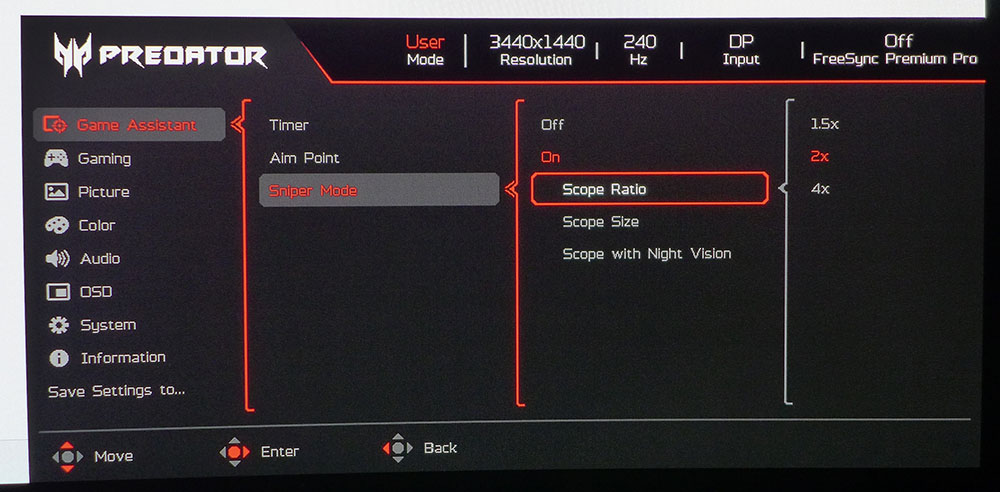
As a non-QD panel, the X34 OLED doesn’t quite have the color saturation of the latest QD-OLEDs, but that is not to say it isn’t colorful. It has more gamut volume than almost any Mini LED monitor with a measured 98.78% coverage of DCI-P3. Due to its infinite OLED contrast, it delivers a stunning image and killer HDR with peak highlights over 1,000 nits. I measured a 25% window pattern at over 660 nits, which makes it brighter than nearly all of its direct competitors.
The gaming feature list is long enough to provide essential items like aiming points, a very flexible sniper mode, refresh rate counter and timers. There is no LED lighting, but that is the only thing missing. There are plenty of picture modes, calibration options and a constant brightness option. OLED panel care comes in the form of a pixel shift and a refresh program. And a pair of internal speakers deliver decentaudio.
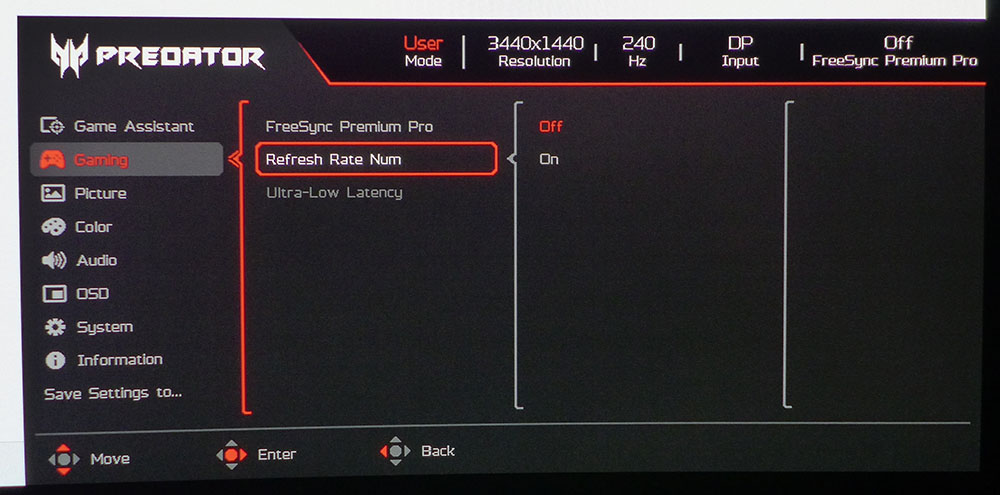
The Predator X34 OLED doesn’t quite set a new bar for value, but at around $100-200 less than other 34-inch gaming OLEDs, it delivers a lot for the money. Let’s take a look.
Assembly and Accessories
The X34 OLED comes packed in crumbly foam in three parts for a toolless assembly. The screen is well protected by a thick peel-off plastic sheet. The base is super solid and once put together, you would have to try very hard to knock it over. The cable bundle includes IEC for the internal power supply plus HDMI and two USBs. There is no DisplayPort. You also get four hefty adaptor lugs for the 200x100mm VESA mount if you’d rather use an arm.
Product 360
The X34 OLED’s front bezel is very thin and almost invisible when the power is on. It’s even flush at the bottom so there’s no logo there to take your eyes out of that gorgeous picture. Only a tiny Predator logo appears at the bottom of the stand. The base is a full 12 inches deep and almost two feet wide, but its slender legs leave plenty of room for peripherals or random desk clutter.
The upright is also slender but rock solid with full ergonomics. You get 5/15 degrees tilt, 15 degrees swivel and 4.8 inches of height. Adjustments have the premium feel I’ve expected from all Predator displays. At the top of the upright is a quarter-inch threaded mount for webcams or other peripherals. And did I mention it’s completely made from metal, not plastic around a metal core. I’ve called other monitors monolithic, but the X34 OLED earns that adjective more than most.
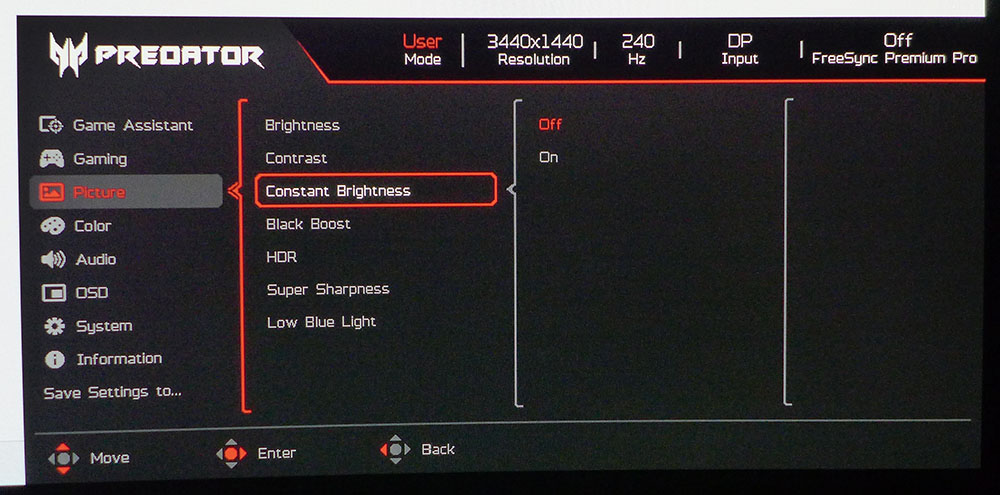
An 800R curvature is currently the tightest radius available. you may see in the top-down view that the sides of the screen come quite far into the user’s peripheral vision. Though image distortion is minimal, this shape imparts something of a fishbowl effect. It’s magnified by the reflection of sound back into the user’s ears. If you like to talk out loud while gaming (I do), you’ll hear your own voice very clearly. It’s a great format for first-person games and simulators. And the thin bezel means you can line up two or three monitors for a hyperrealistic driving or flying rig.
The input panel is up and under and includes two HDMI 2.0, two DisplayPort 1.4, and three USB 3.2, one upstream and two down. Under the front edge of the screen are two more USBs, a type and a type C, along with a 3.5mm headphone jack. An LED bar glows orange in standby and blue when the power is on. A tiny joystick is the only physical control. Two internal speakers play with five watts of power and deliver clean loud sound with reasonable bass and no audible distortion.
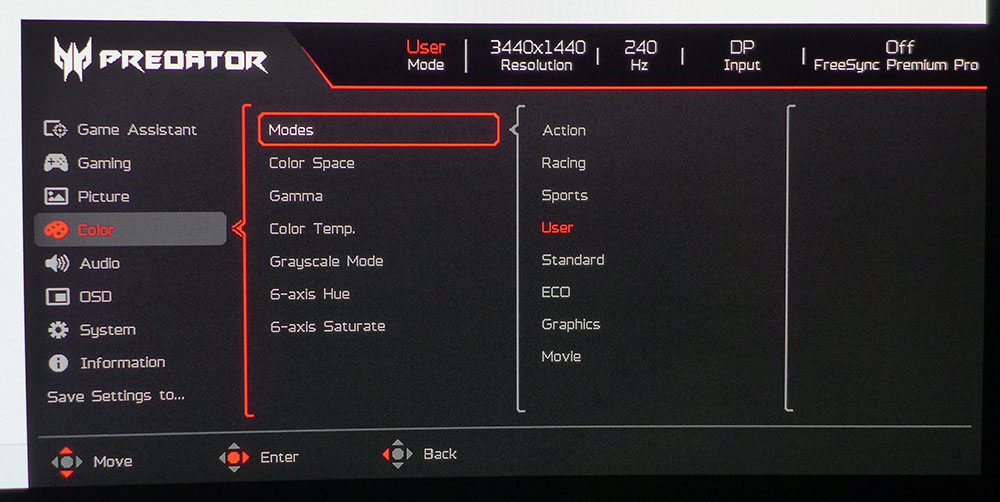
OSD Features
Pressing the X34 OLED’s joystick summons a quick menu that lets you change inputs, adjust brightness and switch picture modes. Another press opens the full OSD, which is divided into seven sections and includes three settings memories.
The Game Assistant menu seems simple, with only three options, but the aim points and sniper mode include a lot of useful functionality. The reticle comes in three shapes and can be red, white or green. Or, you can have it change color automatically with the background to maintain its visibility. You can also move it around the screen. The sniper mode has three magnifications, multiple sizes and a night vision option. And you get four countdown timers.
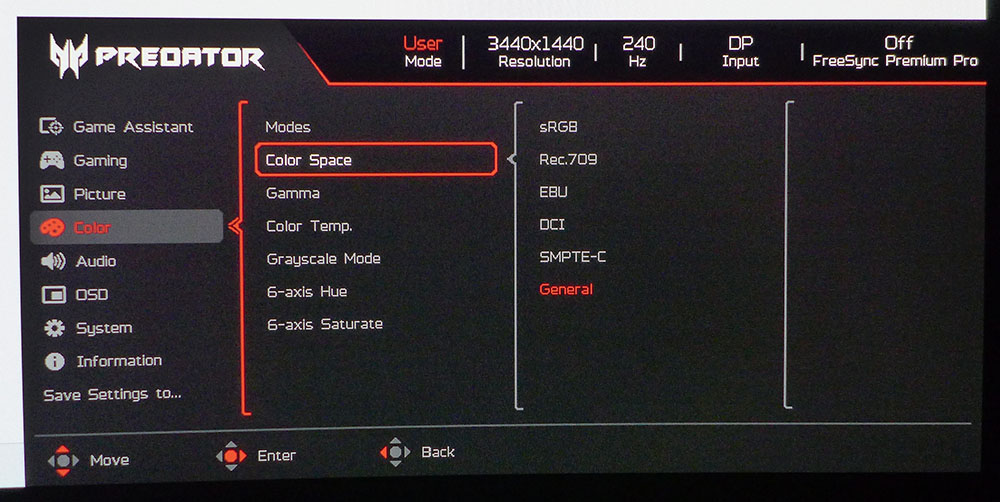
The next menu, Gaming, has aFreeSync/Adaptive-Sync toggle and a frame counter. Ultra-Low Latency is available when you turn FreeSync off and reduces input lag by 1ms according to my tests. If you’re able to run consistently faster than 200fps, it’s a viable option, but with FreeSync on, input lag is still very low.
Happily, Acer doesn’t hide the X34 OLED’s constant brightness option in the OLED care menu. It’s in the Picture menu where it’s easier to find. If you want the monitor’s full brightness capability, it should be left off. When it’s turned on, the peak white level is around 260 nits. This menu also has Black Boost for enhanced shadow detail, an HDR toggle, Super Sharpness (edge enhancement, leave off) and a Low Blue Light option.
The Color menu has eight picture modes, three of which can function as settings memories. If you make any change at all, the X34 OLED reverts to the User mode. Calibration options include gamma presets and color temps plus two-point RGB sliders with gain and bias control, very nice. A selection of color spaces is also offered but I found during testing that they all measured the same. There is no usable sRGB mode, more on that later.
Hot Key Assignment lets the user pick a function for the first two slots of the quick menu. You can also specify normal or low HDMI black levels. Leave this one on normal for best results. Low clips some shadow detail and does not improve picture quality. The second screen of System options has a pixel shifter and a refresh routine for OLED panel care. Finally, you can save your settings to one of three memories that are part of the picture mode selection, very cool.
Acer Predator X34 OLED Calibration Settings
I found the X34 OLED a little green in tone out of the box, so some adjustment is required for best results. In the user color temp option, you get a two-point control with gain and bias sliders. I also measured a dark gamma close to 2.4. Changing the preset to 2.0 and tweaking the RGB gains made a significant improvement in all aspects of the image. I’ve listed my settings below. For the brightness values, I’m showing what it takes to hit the nit values with Constant Brightness off and on. The higher number is required when it’s on. The X34 OLED responds to HDR signals with an auto-switch and grays out all picture controls.
Gaming and Hands-on
Gaming on the X34 OLED is a superlative experience. I’ve become spoiled by 240 Hz OLEDs for sure, but this is one of the faster ones. I could sense its lower input lag even though it’s only a couple of milliseconds quicker in my tests. Run and gun maneuvers were super easy because I could quickly reverse my viewpoint or direction of travel. I can only imagine this monitor in more skilled hands. It is truly competition-worthy.
WQHD resolution meant I had no trouble maintaining 240fps inDoom Eternal.This is where an OLED is in its element. There is no hint of motion blur at any time. I could not make a mouse movement fast enough to cause even the slightest smear.
The image is stunning with its deep contrast and bright highlights. I could tell the X34 OLED was brighter than other 34-inch screens I’ve reviewed. Only the Asus PG34WCDM hits higher HDR peaks. Asus is over 660 nits while Asus cracks 700.
However, I did note some shadow detail issues in HDR mode. My tests showed dark EOTF tracking, which manifested in the game.Doom Eternalhas an excellent tweaker for this issue that allows the user to adjust multiple parameters to make every part of the image clear. Once I did this, the image rose to another level. I would have liked the X34 OLED to track luminance correctly and out of the box, but at least the fix isn’t difficult.
I also enjoyed the tight curvature. 800R is as tight as it gets for any curved monitor and the wraparound effect is excellent. I was pulled into the game, and I enjoyed better situational awareness since everything was within my field of vision. I didn’t have to turn my head at all. I can see the potential for a killer racing sim with two or three X34 OLEDs.
In productivity apps, I enjoyed the razor-sharp picture and deep contrast. There are no shadow detail issues that need to be corrected in SDR mode. With a change to the gamma 2.0 preset, everything is clearly visible down to the tiniest font or photo element. The picture is very colorful, and I didn’t miss the Quantum Dot tech. Its omission here is not a negative.
Regarding the 800R curvature, I always noticed it but if I kept my focus at the center of the screen, it wasn’t a problem. Web browsing and document editing are a common activity that is best performed in the middle two-thirds of the X34 OLED. Spreadsheets are a bit more unusual if you view them full screen. It just requires a little getting used to. The only thing I wished for when working in Photoshop was an accurate sRGB mode. I could only color grade in the DCI-P3 gamut.
Takeaway:Aside from its missing sRGB mode, there is nothing not to like about the X34 OLED. It’s a terrific gaming monitor with super quick response and blur-free motion processing. The color and contrast are everything I’ve come to expect and enjoy from OLED displays. And it produces decent sound from its internal speakers. The extreme curve is different, but once acclimated, it’s not a problem in productivity, and it’s a definite asset for first-person gaming.
MORE:How to Choose the Best HDR Monitor
Current page:Features and Specifications
Christian Eberle is a Contributing Editor for Tom’s Hardware US. He’s a veteran reviewer of A/V equipment, specializing in monitors. Christian began his obsession with tech when he built his first PC in 1991, a 286 running DOS 3.0 at a blazing 12MHz. In 2006, he undertook training from the Imaging Science Foundation in video calibration and testing and thus started a passion for precise imaging that persists to this day. He is also a professional musician with a degree from the New England Conservatory as a classical bassoonist which he used to good effect as a performer with the West Point Army Band from 1987 to 2013. He enjoys watching movies and listening to high-end audio in his custom-built home theater and can be seen riding trails near his home on a race-ready ICE VTX recumbent trike. Christian enjoys the endless summer in Florida where he lives with his wife and Chihuahua and plays with orchestras around the state.